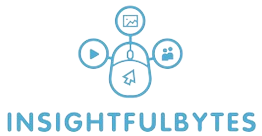In today’s fast-paced digital world, personal productivity has become more crucial than ever. With countless distractions and an overwhelming amount of tasks competing for our attention, finding the right tools to streamline our workflow is essential. Personal productivity applications have emerged as game-changers, offering innovative solutions to help individuals manage their time, organize their tasks, and achieve their goals more efficiently.
The Evolution of Personal Productivity Tools
The concept of productivity enhancement isn’t new, but the digital revolution has transformed how we approach personal organization. From simple to-do lists written on paper to sophisticated AI-powered applications, the journey has been remarkable. Modern productivity apps leverage cutting-edge technology to provide personalized experiences that adapt to individual working styles and preferences.
The shift from traditional methods to digital solutions has been driven by several factors: the increasing complexity of modern life, the need for cross-platform synchronization, and the desire for real-time collaboration. Today’s professionals juggle multiple projects, deadlines, and responsibilities, making manual tracking nearly impossible.
Essential Categories of Productivity Applications
Task Management and To-Do List Apps
Task management applications form the backbone of personal productivity systems. These tools help users capture, organize, and prioritize their responsibilities effectively. Popular options include Todoist, Any.do, and Microsoft To Do, each offering unique features such as natural language processing, smart scheduling, and project categorization.
The key to successful task management lies in finding an application that matches your cognitive style. Some users prefer simple, minimalist interfaces, while others thrive with feature-rich platforms that offer detailed project tracking and analytics. The best task management apps provide flexibility without overwhelming users with unnecessary complexity.
Time Tracking and Focus Applications
Understanding how we spend our time is fundamental to improving productivity. Time tracking applications like RescueTime, Toggl, and Forest provide insights into daily habits and help identify areas for improvement. These tools often incorporate techniques such as the Pomodoro Technique, which breaks work into focused intervals followed by short breaks.
Focus applications take time management a step further by actively blocking distractions. Apps like Cold Turkey and Freedom can restrict access to social media, news websites, or other time-wasting platforms during designated work periods. This approach helps create a distraction-free environment conducive to deep work and concentration.
Note-Taking and Knowledge Management
The ability to capture and organize information efficiently is crucial for maintaining productivity. Modern note-taking applications such as Notion, Obsidian, and Evernote have evolved beyond simple text storage to become comprehensive knowledge management systems. These platforms support multimedia content, cross-linking between notes, and powerful search capabilities.
The trend toward connected note-taking reflects our understanding of how the brain processes and retains information. By creating networks of related concepts and ideas, these applications help users build a personal knowledge base that grows more valuable over time.
Advanced Features Revolutionizing Productivity
Artificial Intelligence Integration
Artificial intelligence has begun to play a significant role in personal productivity applications. AI-powered features include smart scheduling, automatic categorization of tasks, and predictive text suggestions. Applications like Clockify and Grammarly use machine learning algorithms to understand user patterns and provide personalized recommendations.
The integration of AI extends to voice assistants and natural language processing, allowing users to interact with their productivity tools more intuitively. This technology reduces the friction between thought and action, making it easier to capture ideas and manage tasks on the go.
Cross-Platform Synchronization
Modern productivity applications excel at maintaining consistency across multiple devices and platforms. Cloud-based synchronization ensures that users can access their information whether they’re working on a desktop computer, tablet, or smartphone. This seamless integration is essential for professionals who switch between devices throughout the day.
The ability to start a task on one device and complete it on another has fundamentally changed how we approach work. It enables a more flexible and responsive workflow that adapts to changing circumstances and locations.
Specialized Productivity Solutions
Project Management for Personal Use
While traditional project management tools were designed for teams, many individuals have adopted these applications for personal use. Platforms like Trello, Asana, and Monday.com offer visual project tracking that helps users manage complex, multi-step goals. The kanban board methodology, popularized by these applications, provides a clear visual representation of work progress.
Personal project management becomes particularly valuable for freelancers, entrepreneurs, and anyone managing multiple concurrent projects. These tools help maintain oversight of long-term goals while ensuring that daily tasks align with broader objectives.
Habit Tracking and Goal Setting
Building positive habits and achieving long-term goals requires consistent tracking and motivation. Applications like Habitica, Streaks, and Way of Life gamify the habit-building process, making it more engaging and sustainable. These tools use behavioral psychology principles to encourage consistent action and celebrate progress.
The effectiveness of habit tracking applications lies in their ability to provide immediate feedback and visual progress indicators. By breaking down large goals into daily actions, users can maintain momentum and see tangible evidence of their improvement over time.
Choosing the Right Productivity Stack
Assessing Personal Needs
Selecting the most effective productivity applications requires honest self-assessment of personal working styles, preferences, and challenges. Some individuals thrive with comprehensive, all-in-one solutions, while others prefer specialized tools that excel in specific areas. The key is to identify the core productivity challenges you face and prioritize applications that address those specific needs.
Consider factors such as the complexity of your projects, collaboration requirements, device preferences, and learning curve tolerance. A productivity system that’s too complex can become counterproductive, while one that’s too simple may not provide adequate functionality for your needs.
Integration and Workflow Optimization
The most effective productivity systems often involve multiple applications working together seamlessly. Modern productivity tools offer extensive integration capabilities through APIs and automation platforms like Zapier or IFTTT. These integrations can eliminate redundant data entry and create automated workflows that save significant time.
For example, you might set up an automation that creates a new task in your project management app whenever you receive an email with a specific label, or automatically log time spent in certain applications to your time tracking tool. These integrations create a cohesive ecosystem that reduces friction and increases efficiency.
The Psychology of Digital Productivity
Behavioral Design Principles
Effective productivity applications incorporate behavioral design principles that encourage consistent use and positive habits. Features like progress visualization, achievement badges, and streak counters tap into our psychological motivations and help maintain engagement over time.
The concept of “friction” plays a crucial role in productivity app design. The best applications minimize the effort required to capture information or complete tasks, making it more likely that users will maintain consistent usage. This might involve features like quick-add buttons, keyboard shortcuts, or voice input capabilities.
Avoiding Digital Overwhelm
While productivity applications can significantly enhance efficiency, it’s important to avoid digital overwhelm. Using too many tools or constantly switching between applications can create more complexity than it solves. The goal should be to find a sustainable system that enhances rather than complicates your workflow.
Regular evaluation and pruning of your productivity toolkit is essential. As your needs change or as you become more proficient with certain tools, your optimal configuration may evolve. Being willing to adjust and simplify your system ensures long-term sustainability and effectiveness.
Future Trends in Personal Productivity
Emerging Technologies
The future of personal productivity applications will likely be shaped by advances in artificial intelligence, augmented reality, and voice recognition technology. We can expect to see more sophisticated AI assistants that can understand context and provide proactive suggestions for optimizing workflows.
Augmented reality may eventually allow for more intuitive interaction with digital productivity tools, while improved voice recognition will make hands-free operation more practical and accurate. These technologies will further reduce the barriers between thought and action, making productivity tools even more seamless and natural to use.
Personalization and Adaptive Systems
Future productivity applications will likely become increasingly personalized, learning from user behavior to provide customized experiences. Machine learning algorithms will analyze patterns in how individuals work and automatically adjust features, notifications, and suggestions to optimize for each user’s unique style and preferences.
This level of personalization will extend to predictive features that can anticipate needs and proactively suggest actions. For example, an application might automatically schedule focused work time based on historical productivity patterns or suggest breaking down large tasks based on past completion rates.
Maximizing Return on Investment
Measuring Productivity Gains
To justify the time and money invested in productivity applications, it’s important to measure their impact objectively. This might involve tracking metrics such as task completion rates, time saved on routine activities, or progress toward long-term goals. Many productivity applications include built-in analytics that can help quantify these improvements.
Regular review of your productivity metrics can help identify which tools are providing the most value and which might need to be replaced or reconfigured. This data-driven approach ensures that your productivity system continues to evolve and improve over time.
Long-term Sustainability
The most successful productivity systems are those that remain sustainable over months and years, not just weeks. This requires choosing applications that can grow with your changing needs and that don’t require constant maintenance or attention. Look for tools with strong developer support, regular updates, and active user communities.
Building habits around your chosen productivity tools is equally important. The most sophisticated application won’t improve your productivity if you don’t use it consistently. Start with simple implementations and gradually expand functionality as the tools become integrated into your daily routine.
Personal productivity applications have revolutionized how we manage our time, tasks, and goals. By carefully selecting and implementing the right combination of tools, individuals can create powerful systems that enhance their efficiency and help them achieve their objectives more effectively. The key to success lies in understanding your unique needs, choosing appropriate tools, and maintaining consistent usage over time. As technology continues to evolve, these applications will become even more powerful and intuitive, offering new opportunities to optimize our personal and professional lives.

